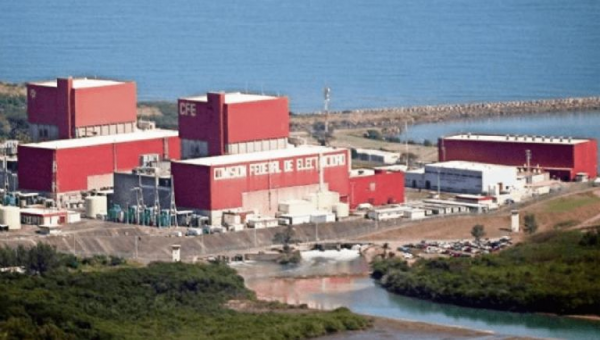When we hear radioactivity, the first thing that comes to our mind is Chernobyl. Could an accident like this happen in México? Experts insist there is an imminent nuclear safety crisis
Veracruz, (April 09, 2021).- On January 21, 2021, at 03:10 in the morning, there was a fuel leak in one of the generators at the Laguna Verde nuclear plant. The results of a risk assessment determined the “probability of severe accident” and “of a large radioactive discharge to the environment”. Reports and photographs show corroded nuclear generator cables and rusted facilities.
A month earlier, on December 21, 2020, internal reports recorded a “diesel leak” as an “unusual event”. Only three weeks had passed since another Condition Report, which described how the nuclear reactor mechanisms were activated without placing the safety gates.

On January 20, Unit 1 of the nuclear plant had a “sudden stop”. It had been in operation for 110 days with fuel recharge problems , starting without having the safety systems operable and with five bars to protect against accidents, out of eight that the nuclear reactor has, failing. On January 21, the National Nuclear Safety and Safeguards Commission informed the Laguna Verde headquarters in writing that it did not authorize them to modify the work plans to operate with these faults, because the safety standards require that at least six bars control systems are working, with adequate levels of boron, the substance that allows to dampen the effects of radiation in the event of a nuclear accident, and only three were active.

All those reports are part of the annexes of a tough letter that the mathematical physicist Bernardo Salas sent to the presidency of Mexico on February 21. Salas has not received a response to this letter, nor to the other 12 that he sent before. When he went to the Veracruz press to express his concerns, he received a harsh statement from the Federal Electricity Commission ( CFE ), the institution that manages the nuclear plant. They accused him of being someone who only alarms the population, without knowledge of what is happening in the plant.

But the academic’s concerns are also supported by other documents. On September 15, 2020, the Division of Nuclear Energy of General Electric sent a letter to the Manager of Nuclear Power Plants of the CFE. The Commission reserved it for five years, but Salas obtained it, he says, from his colleagues inside Laguna Verde. The document is signed by Rafael Ledesma, who has been manager of Nuclear Energy at the company for the past two decades, according to public documents. Ledesma did not reply to messages for this text.
In the letter, General Electric affirms that its contract as supplier included that 60 days before each nuclear refueling, the CFE would deliver a minute with the activities that it was going to carry out. But this did not happen in time.
The CFE delivered the recharge program to General Electric on July 16, 2020, for an operation that would begin less than a month later, on August 14. When refueling began, the letter says, the CFE did not provide radiation protection equipment and, although the company said they needed to change at least 15 control rods, CFE argued that it would only pay for 12. They delivered damaged parts and wanted to blame the company for the damage.
The company, in its letter, assured that it only guaranteed the bars that they changed and separated from what happened with the rest. In addition, he assured that the CFE had not paid them, although they did the maintenance, even with all the setbacks.
“The control rods are like the brakes on a car. They are the ones that make it possible to stop nuclear fission and shut down the reactor, ”Salas told me. After that failed maintenance in August, the plant has had orange alerts in September, November, December and January. Officially, the CFE says there is nothing to worry about. Meanwhile, Salas insists there is an imminent nuclear safety crisis, and that he is open to a public debate to prove it.
Source: El Universal


